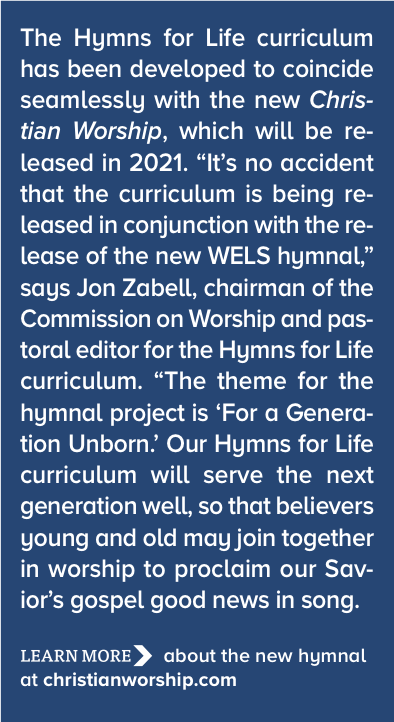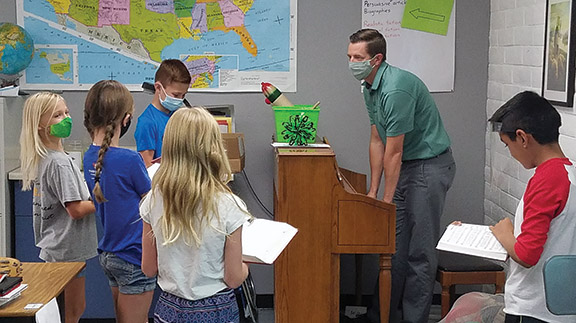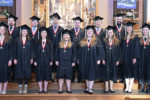 |
For many Christians, hymns are woven into the fabric of our faith lives. “Jesus Loves Me” may be the first song we learn as a toddler; “Amazing Grace” may be the last song that passes our lips before Jesus carries us home. Hymns have the power to convict and comfort, to instruct and inspire.
In 2012, the WELS Commission on Worship discussed the importance of preserving our rich hymn heritage—ensuring that the next generation of believers doesn’t lose this priceless spiritual treasure. In response, the Hymns for Life Committee was established to craft a three-year hymnology curriculum for WELS teachers to use in their primary, middle, and upper grade classrooms. Content from the curriculum can also be incorporated into Sunday school programs.
“The Hymns for Life curriculum is designed to impress the biblical truths expressed in hymns on the hearts and minds of young believers,” says Jeremy Bakken, publishing editor of the project. The title of the curriculum sums it up simply: Hymns learned in childhood will stay with children for an entire lifetime. Bakken continues, “Our prayer is that students will appreciate these hymns and recall their spiritual truths in every stage of life.”
The curriculum helps students learn from and appreciate all components of a hymn: from its scriptural truths to the poetry of its language to the joy and beauty of its music.
 Kevin Bode, teacher and music director at Emmanuel Lutheran School, Tempe, Ariz., understands the need to connect young believers with hymns: “Hymns are a powerful blessing God has given us. They keep us close to him amidst all the chaos and evil around us.”
Kevin Bode, teacher and music director at Emmanuel Lutheran School, Tempe, Ariz., understands the need to connect young believers with hymns: “Hymns are a powerful blessing God has given us. They keep us close to him amidst all the chaos and evil around us.”
In fact, Bode, who served as the curriculum development chair of the Hymns for Life Committee, has put the curriculum into practice in his own classroom (pictured). Each week, he introduces students to the content of a hymn, which is then sung each day. Once students are comfortable with the melody, Bode adds musical variations or physical movements: “They are simple to do, keep the hymn fresh, and students find them fun to do,” he adds.
According to Bode, two powerful elements come together in the curriculum: music and biblical teachings. “Music moves the soul and has a way of touching our emotions, and we want to give students the chance to experience this. And we know the power of biblical truths and the words of Jesus,” he says. “Hymn lyrics remind students what God has already done for them, is doing right now, and will continue to do for them until they are safe in his arms.”
Learn more at nph.net/hymnsforlife.
Volume 107, Number 11
Issue: November 2020







